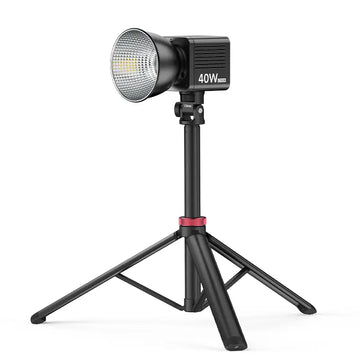The Ultimate Guide to Choosing the Right Light Stand for Your Photography Studio
Corps
Choosing the right light stand for your photography studio can be a daunting task, especially with the myriad of options available in the market. This comprehensive guide will help you navigate through the essential factors to consider, ensuring you make an informed decision that enhances your studio's functionality and your photography's quality.

Understanding the Importance of Light Stands
Light stands are the backbone of any photography studio. They provide the necessary support for your lighting equipment, ensuring stability and flexibility in your lighting setups. A well-chosen light stand can significantly impact the quality of your photographs by allowing precise control over light direction and intensity.
Key Factors to Consider When Choosing a Light Stand
When selecting a light stand, several critical factors come into play. These include height, weight capacity, portability, and build quality. Understanding these elements will help you choose a stand that meets your specific needs.
Height and Adjustability
The height of your light stand is crucial as it determines the range of lighting angles you can achieve. Opt for stands that offer adjustable height settings, allowing you to position your lights at various levels. For instance, a stand with a maximum height of 10 feet provides greater flexibility compared to one that only extends to 6 feet.
Weight Capacity
Consider the weight of your lighting equipment when choosing a stand. Ensure the stand can support the weight of your lights, modifiers, and any additional accessories. Overloading a stand can lead to instability and potential damage to your equipment. For example, if you use heavy-duty studio lights, opt for a stand with a higher weight capacity.
Portability and Ease of Use
If you frequently move your lighting setup or work on location, portability becomes a significant factor. Lightweight and collapsible stands are ideal for photographers on the go. Look for stands that are easy to set up and dismantle, ensuring a hassle-free experience during shoots.
Build Quality and Durability
Investing in a high-quality light stand ensures longevity and reliability. Stands made from robust materials like aluminum or steel offer better durability and stability. Additionally, consider stands with reinforced joints and locking mechanisms to prevent accidental collapses.
Types of Light Stands
There are various types of light stands available, each catering to different photography needs. Understanding these types will help you choose the most suitable stand for your studio.
Standard Light Stands
Standard light stands are versatile and widely used in photography studios. They are suitable for most lighting setups and offer a good balance between height, weight capacity, and portability. These stands are ideal for beginners and professionals alike.
Boom Stands
Boom stands provide additional flexibility by allowing you to position lights at various angles and heights. They are perfect for overhead lighting and creating dramatic effects. However, boom stands are generally bulkier and require careful handling to maintain balance.
C-Stands
C-stands, or Century stands, are known for their stability and durability. They are commonly used in professional studios for heavy-duty lighting setups. C-stands feature a unique design with adjustable legs, making them suitable for uneven surfaces and tight spaces.
Conclusion
In conclusion, choosing the right light stand for your photography studio is a crucial decision that can significantly impact your work's quality and efficiency. By considering factors such as height, weight capacity, portability, and build quality, you can make an informed choice that meets your specific needs. Whether you opt for a standard light stand, a boom stand, or a C-stand, ensure it aligns with your studio's requirements and enhances your creative potential.
We hope this ultimate guide to choosing the right light stand for your photography studio has provided valuable insights and helps you make the best decision for your setup. Happy shooting!










commentaires